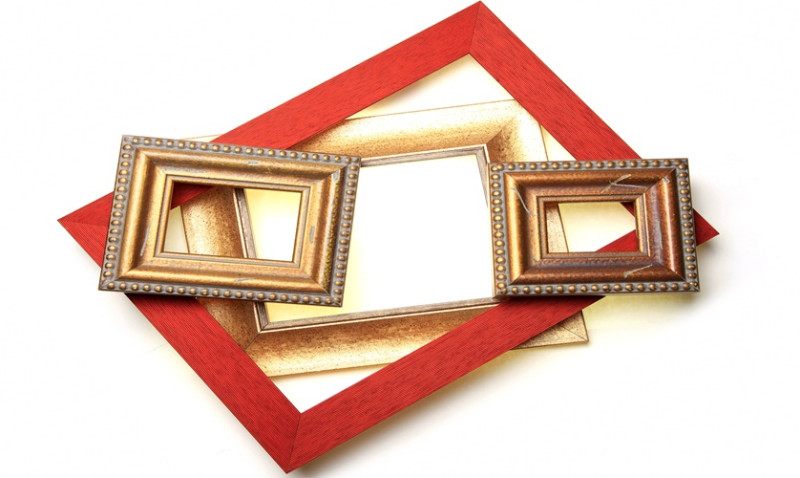
Taking your art to a local market or craft fair can be an exciting and profitable way to showcase your work to a new audience. Whether you’re a DIY enthusiast turning your hobby into a hustle, a young professional trying to express your creativity, or a tradesperson with a flair for artistic craftsmanship, art vending gives you a chance to meet buyers face to face — a far better experience than selling online alone.
But markets can also be overwhelming for first-time vendors. Without the right approach, your beautiful display might go unnoticed, or your sales may not reflect the hard work and passion put into your pieces. To help you start strong, we've listed the key DOs and DON’Ts when setting up your first market stall in the UK. These practical tips will give you the confidence and strategy you need to stand out, connect with customers, and maximise your earning potential.
DO Understand Your Target Market
Before you book your spot at the local artisan fair or weekend market, research the event thoroughly. Who shops there? Are they looking for home decor, eco-friendly gifts, or unique art pieces? If it's a family-friendly market outside of Manchester, for example, your hand-painted prints might appeal to young couples redecorating nurseries. Conversely, trendy London pop-up events might attract creative professionals looking for statement pieces for city flats.
Tailor your offering to fit the crowd you're about to meet. Knowing your audience means you can curate your stock accordingly — nothing too niche unless your market supports it. Practical art forms like framed prints, coasters, custom mugs, or even small sculptures that can easily be wrapped and taken home are far more appealing to casual browsers.
Also consider your price point versus audience expectations. High-value pieces may need a more upscale audience, whereas affordable wall art appeals to younger buyers and students looking for quick-decision purchases without breaking the bank.
It’s also wise to talk to other vendors or research on social media to see what sells well at the particular market you’re targeting. Instagram hashtags and local Facebook artisan groups can be goldmines for insights.
DON’T Overload Your Stall With Too Much Product
One of the biggest mistakes new art vendors make is trying to showcase everything they’ve ever made. While it might seem like a good idea to show off variety, a cluttered stall can easily overwhelm shoppers. Instead, curate your display with your strongest, most cohesive pieces that fit together in a visually pleasing theme.
Remember — markets are full of stimulation. People are walking through dozens of stalls, often browsing quickly. Your aim should be to catch their eye within the first few seconds, and that’s far easier when your artwork is beautifully spaced out and easy to photograph.
Think in terms of collections — three framed pieces, a series of small prints, matching cushion covers. This gives buyers visual context and helps them imagine the artwork in their own homes, especially if they're in the mood to redecorate.
Too much product also increases your setup time and clutters your table, making it difficult to manage customer inquiries and transactions. Keep it clean, focused, and professional.
DO Invest in a Strong Visual Display
The look and feel of your stall is just as important as the products you're selling. In fact, the visual appeal of your setup should act like a magnet, drawing people over from several stalls away. Your stall should reflect your brand, whether that’s rustic reclaimed woods, boho linen backdrops, or sleek white and black minimalism.
Use height and layers to display your work — risers, crates, hanging panels or even a small portable easel can all create visual interest. A flat, horizontal display is less engaging. Consider creating a mini gallery wall using stands or display boards, especially if you sell framed artwork.
Good lighting can make colours pop and details shine — particularly for indoor market venues or during gloomy UK winter days. Battery-powered LED lights add a professional touch without requiring plugs or complicated setups.
Make sure prices are clearly visible. Use tasteful, branded labels or small chalkboards — customers rarely like asking about price and may walk away rather than inquire. If possible, include simple hooks like “Perfect gift for new homeowners” or “Ideal for small spaces”. Context sells art.
DON’T Forget to Brand Yourself
Even if it’s your first market, you need to present yourself as a professional brand. Consistent branding builds trust and boosts the likelihood of post-event sales. That means a well-designed business name sign, logo, social media handle and contact details should be present at your stall.
Have business cards or postcards ready to hand out — ideally with a photograph of your work on one side and your website or Instagram on the other. It’s common for shoppers to browse and come back later — if they don’t have something to remind them of your name, you may lose future sales.
Your packaging also plays a role in branding. Branded paper bags, recycled wrapping paper or a small ‘Thank You’ card in each purchase elevates your art from a market buy to a boutique experience.
Also brand yourself personally — be approachable and open. Greet everyone with a smile, but don’t hover or go into a sales pitch unless invited. Wear something comfortable but in tune with your vibe as a creator — like a branded apron, casual smart look, or colourful scarf that subtly reflects your work.
DO Prepare for Practicalities
Running a stall isn’t just about art — it’s about managing a pop-up shop efficiently. This means having enough change (especially pound coins), a card reader that works without Wi-Fi, and systems to quickly pack and protect sold items.
Make sure your card machine is working smoothly with a backup charging block — more than 80% of casual buyers in the UK now prefer contactless or mobile payments, and the lack of a card reader could cost you dozens of sales.
Use the table space wisely. Have sturdy boxes under the table to store backups of popular items without cluttering your top display. Keep all your essentials — pens, receipt book, packing tape, scissors — within easy reach but not visible to the customer.
Weatherproofing is also essential if you’re vending at an outdoor market. Bring a waterproof cover or gazebo, weights to secure your table, and plastic sleeves or cello bags for artwork if the forecast looks rainy. Always check the weather for the day ahead!
DON’T Be Passive — Engage With Visitors!
Many first-time vendors make the mistake of quietly sitting behind their table, fiddling with their phone and waiting for a sale to materialise. The truth is, connecting with potential customers boosts your chance of making a sale by a significant margin. People buy from people.
Make eye contact, say hello, offer compliments or simply ask how someone’s day is going. It doesn’t have to be a sales pitch — just be friendly and let the conversation develop naturally.
If someone shows particular interest in a piece, share a small story behind it. What inspired you? Is it part of a set? How long did it take? These human touches help the buyer form a connection with your art and increase the odds of purchase.
It also helps to ask questions — “Are you decorating a new home?” or “Looking for gifts today?” This can open up new opportunities you hadn’t expected — perhaps a visitor isn’t buying today but is a local designer looking for new artists to feature in a project.
DO Reflect and Record What Worked
After your first market, take 30 minutes to jot down what went well and what didn’t. Which products sold best? What questions did customers frequently ask? Did you run out of any materials like bags or wrapping?
This mini review will help you prepare even better for your next market and shape your future product range. For example, if you notice lots of people commented on a sunset landscape but didn’t buy the framed version, maybe offer it as a smaller postcard in your next collection.
Markets are a great test ground. Use each one to learn how customers engage with your work, and tweak your setup and stocks accordingly. Over time, you’ll build a stall — and a brand — that’s unmistakably yours and deeply in tune with your audience.
Final Thoughts
Your first art vending experience might feel overwhelming at first, but with the right preparation and attitude, it can be incredibly rewarding. Remember — it’s not just about selling; it’s about connecting, learning, and showcasing your creativity to the world. Stick to these DOs and DON’Ts, and you’ll be on track to making your first market stall a long-term success in the UK’s thriving maker community.
Good luck — and happy vending!





